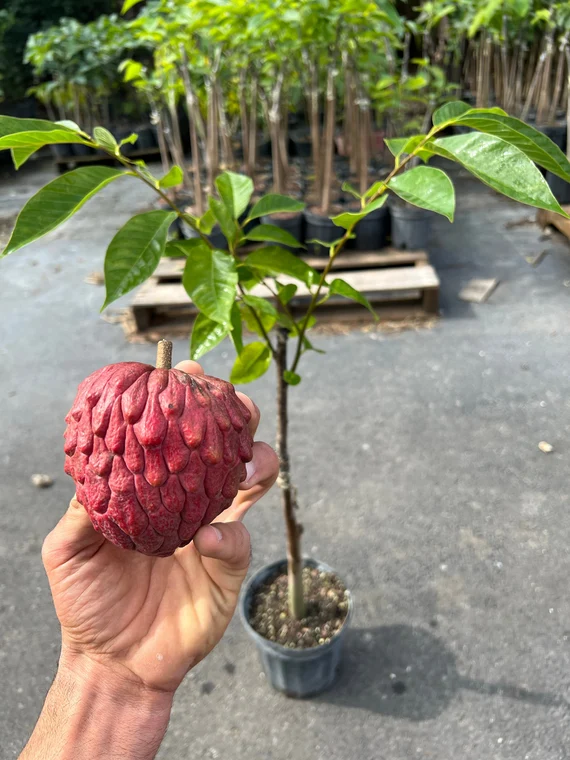Uncategorized
Red Atemoya Grafted Tree: The Rare, Sweetheart of Exotic Fruit Gardens

If you’re a tropical fruit lover or an adventurous gardener on the hunt for rare and rewarding trees, allow us to introduce you to one of the most exciting cultivars you can plant: the Red Atemoya Grafted Tree.
A beautiful blend of science, nature, and flavor, the red atemoya is not only a showstopper in any garden but also a producer of one of the most delicious, custard-like fruits you’ll ever taste.
What Is a Red Atemoya?
The Atemoya is a hybrid fruit—a cross between the sugar apple (Annona squamosa) and the cherimoya (Annona cherimola). The red atemoya is a rarer cultivar that boasts reddish-pink skin tones, blushed flesh, and an ultra-sweet, floral flavor profile that rivals its green cousins.
Red atemoya trees are typically grafted, not grown from seed, to ensure earlier fruiting, predictable quality, and disease resistance. Grafted trees also retain the desirable traits of their parent plant—something seed-grown atemoyas can’t guarantee.
Why Grow a Grafted Red Atemoya?
🌺 Stunning Appearance
The fruit’s striking red or pink hues make it a garden showpiece. Its rounded, scale-patterned skin and sometimes heart-like shape add even more visual charm.
🍨 Incredible Flavor
The red atemoya’s flesh is smooth, creamy, and sweet—often compared to a blend of pineapple, strawberry, vanilla, and custard apple. It’s low in acidity and nearly seedless in some cultivars.
⏳ Faster Fruiting
Thanks to grafting, these trees bear fruit 2–3 years earlier than seed-grown plants—often producing within 1–2 years under the right conditions.
🌳 More Resilient & Reliable
Grafted red atemoyas tend to be hardier, more disease-resistant, and uniform in fruit quality. They’re often grafted onto vigorous rootstock like pond apple (Annona glabra) or cherimoya.
How to Grow a Red Atemoya Tree
Whether you’re growing in-ground or in a large container, red atemoya trees are relatively easy to manage in warm climates.
Growing Requirements:
- ☀️ Sunlight: Full sun for best fruit production
- 🌱 Soil: Well-draining, loamy soil; pH between 6.0–6.5
- 💧 Watering: Moderate and consistent; avoid waterlogging
- 🧂 Fertilizer: Balanced organic fertilizer during growing season (spring to early fall)
- ❄️ Cold Sensitivity: Protect from frost (best in USDA zones 9b–11)
🧤 Pollination Tip: Red atemoyas are partially self-pollinating, but hand pollination improves fruit set significantly—especially in home gardens.
When and How to Harvest
The fruit typically ripens late summer to early fall, depending on your region. It should be harvested when it starts to soften slightly and turns fully red or pink. Atemoya does not ripen properly on the tree, so pick when mature and allow to ripen at room temperature for a few days.
🥄 Serving Tip: Chill the ripe fruit and eat with a spoon like a custard. It’s perfect in smoothies, fruit bowls, or simply fresh off the spoon.
Final Thoughts
The Red Atemoya Grafted Tree is a hidden gem for fruit growers who want something truly special. From its stunning fruit to its rich, creamy flavor, this tree offers the perfect blend of beauty and bounty. It’s not just a plant—it’s a conversation piece, a culinary treat, and a long-term investment in your edible landscape.
